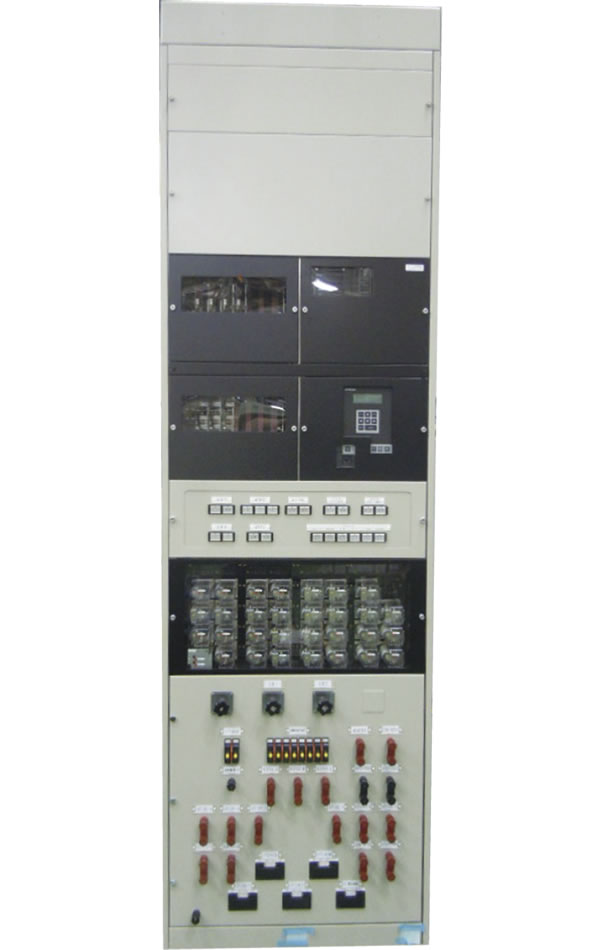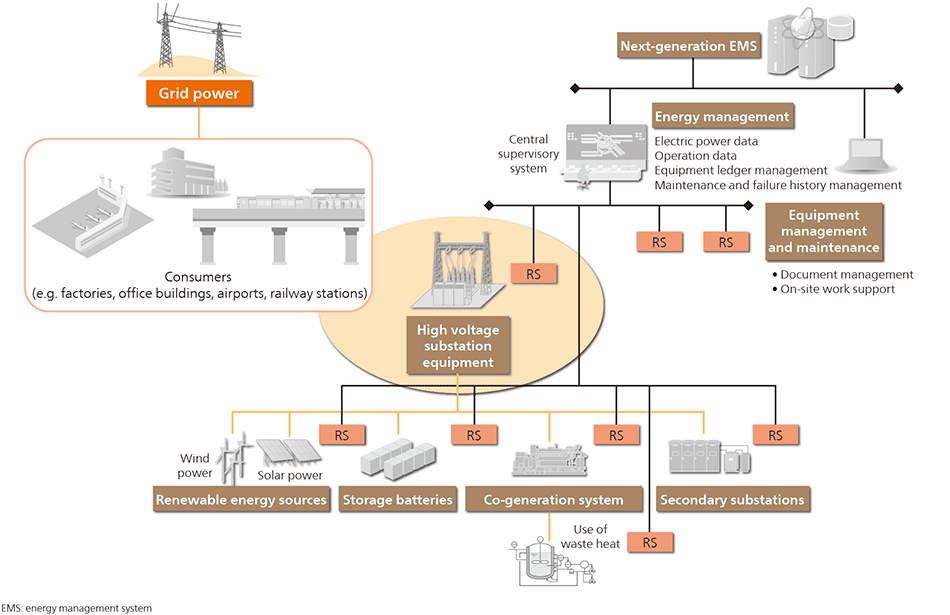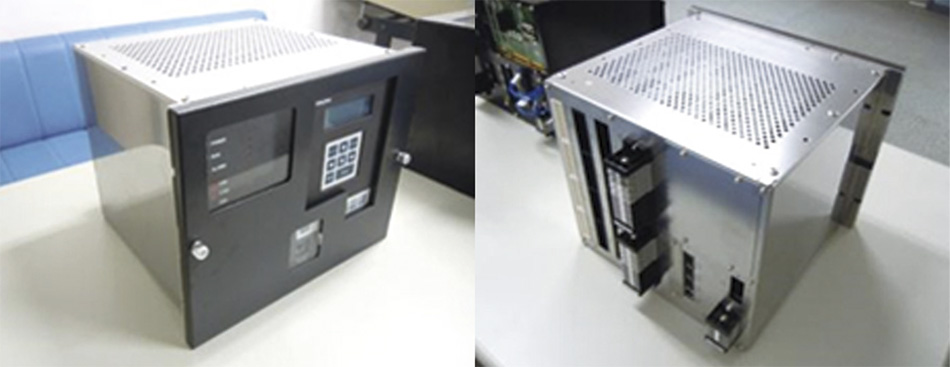1. Virtual Power Plant
An increase in the use of solar power generation, storage batteries and other distributed energy resources is posing a range of problems on the grid. The virtual power plant (VPP) is a technology designed to centralize supervisory control based on information communication technology (ICT) for controlling and utilizing these items like a single conventional power source.
Hitachi is conducting demonstration operations of the VPP with the use of electric vehicles in the US state of Hawaii and with heat pumps in the UK city of Manchester*. In both locations, they are adopted as energy sources that are distributed to consumers and integrated into the grid. These systems are studied as a means of stabilizing the grid according to the fluctuations in the output of renewable energy in Hawaii and as a commodity to be traded in the power trading market in Manchester.
In Japan as well, a negawatt power trading market will be established in 2017. This fiscal year, the Ministry of Economy, Trade and Industry (METI) embarked on the virtual power plant construction and demonstration project.
- *
- A demonstration project commissioned by METI and by the New Energy and Industrial Technology Development Organization (NEDO).









